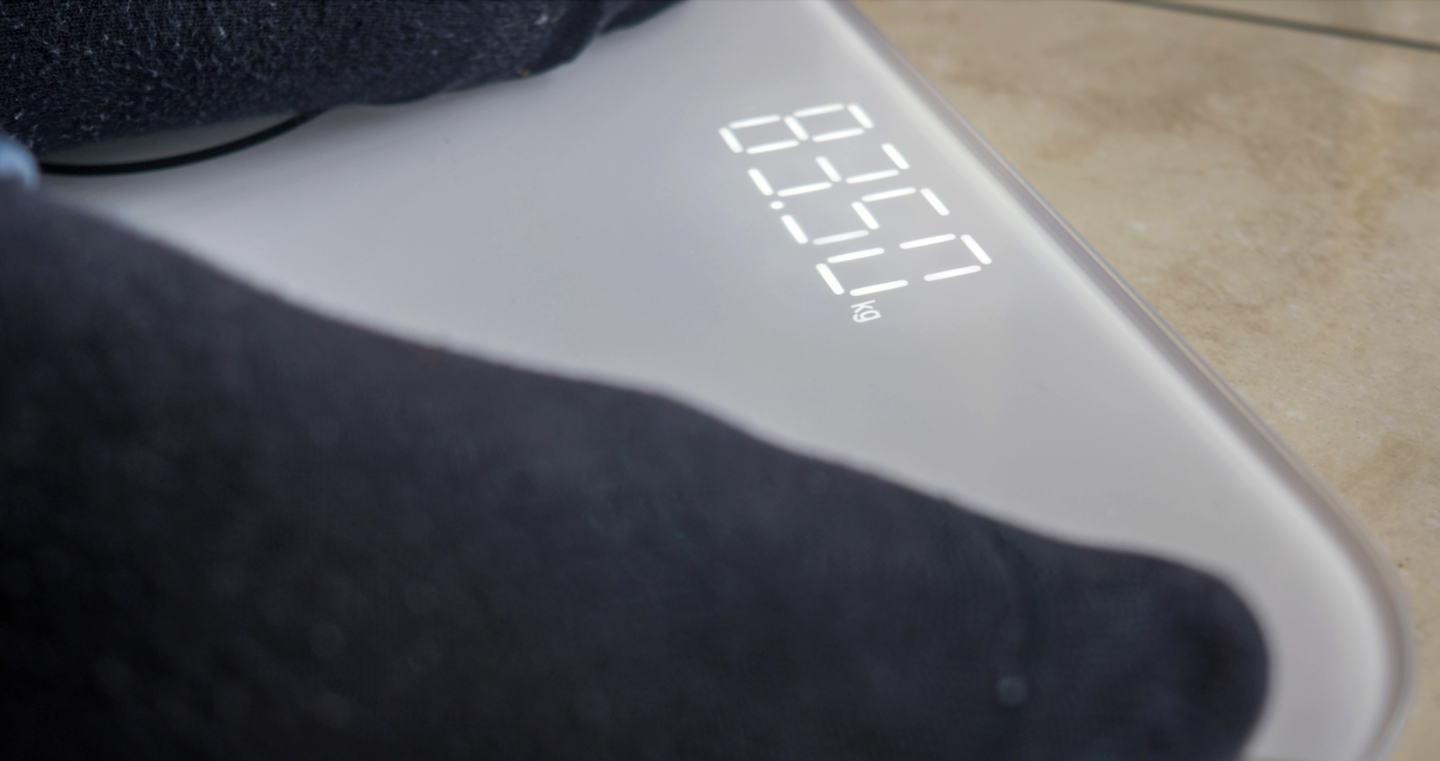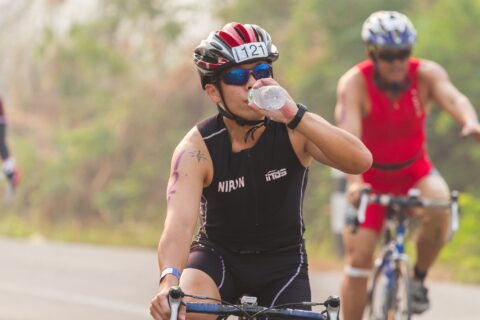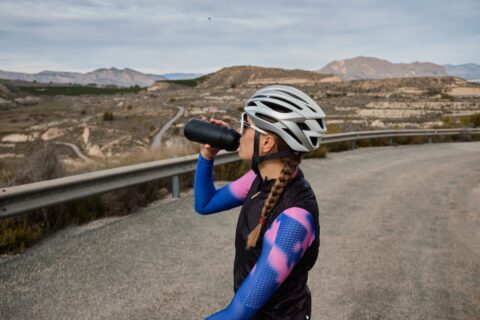Seeking an “ideal racing weight” is often one of the first advantages competitive cyclists seek to tip the power-to-weight balance in their favor. Because carrying extra weight has a direct effect on how much speed your effort produces, there is the potential for large improvements in performance.
The physiologists and nutritionists at the former University of Colorado Sports Medicine and Performance Center often met with athletes who were looking to better understand their ideal weight. Unfortunately, many of these athletes felt that lighter was always better and had gotten the balance wrong. They went past “ideal”, and ultimately hurt their performance with their effort to minimize the value on the scale.
While it seems intuitive that cyclists want to be as lean as possible to climb hills faster; is there a point where they are too lean?
I spoke with Jared Berg, one of the center’s past physiologists, about how he and his team guide athletes toward finding their ideal racing weight.
Focus on Body Composition, Not Weight
The process starts with an assessment of the current state of the athlete by analyzing their body composition. This is important because targeting a specific composition instead of an arbitrary weight better defines what is achievable, and ideal, for each individual athlete.
Twenty years ago, researchers had subjects undergo hydrostatic weighing, a complicated method that measured how buoyant subjects were when they submerged themselves in a pool of water. Today, the method is different.
“[Hydrostatic weighing] wasn’t very practical, and its accuracy depended on how good subjects were at expiring all the air out of their lungs while underwater,” Berg said.
Most physiologists and exercise specialists now use skinfold calipers as the tool of choice because of their ease of use. There is also DEXA Scan technology, which uses an X-ray scan to calculate lean body mass, bone density, and fat mass. According to Berg, DEXA is the most accurate method to assess body composition, however, it is not feasible for repeat measures due to its expense and radiation exposure.
“If you consistently use skin calipers, you can sufficiently assess a body composition trend which will ultimately prove more useful than knowing your precise body composition from DEXA once,” Berg said.
To determine body composition, Berg and others take six skin fold measurements and plug them into equations that predict body composition based on each subject’s age, sex, and athletic status. These equations predict how much Lean Mass (Fat-Free) and Fat Mass an athlete has.
It is important to point out that these predictive equations are based on cadaver studies and the accuracy of the predictions are dependent on how closely the athlete’s body type matches up with the bodies used for the equations. So, the predictions will be more accurate for some compared to others.
Once you have those numbers, what do you do with them? Normative charts that compare large populations of people can help physiologists and physicians understand how much body fat is ideal for the average person. The following data, for example, from the American College of Sports Medicine defines what is healthy/fit with regards to body fat, as it relates to one’s risk for cardiovascular disease. (Excellent, or very fit, is at the lower end of the range; good, or generally fit, is toward the higher end of the range.)
| Excellent/Very Fit Body Fat | Good/Generally Fit Body Fat | |
| Women aged 20-29 years | 15% | 21% |
| Women aged 30-39 years | 16% | 22% |
| Women aged 40-49 years | 19% | 25% |
| Women aged 50-59+ years | 21% | 29% |
| Men aged 20-29 years | 8% | 14% |
| Men aged 30-39 years | 11% | 17% |
| Men aged 40-49 years | 13% | 19% |
| Men aged 50-59+ years | 15% | 21% |
Athletes do not necessarily need to be in these body composition ranges to be healthy, according to Berg. However, athletes or individuals that are five percentage points higher will have an increased risk of cardiovascular disease and other metabolic dysfunctions like diabetes. And, more to the point of this discussion, they’ll have a decreased aptitude for climbing hills on their bike.
Stay within 5% of the good/generally fit range or performance will suffer.
Jared berg, exercise physiologist
The physiologists at the Performance Center work with some of the best cyclists in the world. They have learned that, based on their skinfold measurements, professional male riders typically have body fat measurements between 8 and 11 percent, and females have between 14 and 18 percent.
“Within these ranges, we often see climbers on the leaner end of these ranges, with time trial specialists being on the higher end of the ranges,” Berg said. “The reality is one athlete’s optimal body composition may be different than another athlete’s optimal body composition, even when competing in the same discipline.”
If these ranges seem high, especially compared to those reported on your bathroom scale, keep in mind that there are many equations and different forms of measurement – such as skin folds and bio-electrical impedance – may not directly compare.
Getting Too Lean Hurts Health and Performance
There are many problems with being too lean. Berg and his colleagues have noticed the following issues when male athletes get below 8 percent, or when females fall below 14 percent:
- Low energy, decreased performance, and poor training quality due to low carbohydrate stores
- Increased risk of illnesses and infection due to altered immune response
- Low levels of testosterone, insulin, and thyroid hormones due to altered endocrine function
- Tiredness or poor mood due to increased stress-hormone release
- Difficulty keeping muscle mass due to increased protein turnover as fuel
- Poor sleep quality, which reduces recovery and adaptation
- Social life disruption because of one or several of the above
- Negative views of food, self-image and / or a disinterest in activities.
Some athletes are more prone to these consequences than others and may not be able to tolerate the lower ranges of the “ideal” body composition. Therefore, it is important to remember that your personal performance, and health, are the most important.
How to Find Your Personal Ideal Racing Weight
Once you have determined your current body composition and begun working toward a weight based on the ideal ranges listed above, pay close attention to how you feel. How are you sleeping? How is your mood? And, most importantly, how is your performance on the bike? If any of these are altered, you may have gone past an ideal weight. Take this as a cue to make sure that you are eating enough to properly fuel your body.
As always, when in doubt, the guidance of a physiologist, nutritionist, or registered dietician may be just what you need to reach your peak performance.
For more on the science and practice of athlete weight management, see the Racing Weight series by Matt Fitzgerald.




